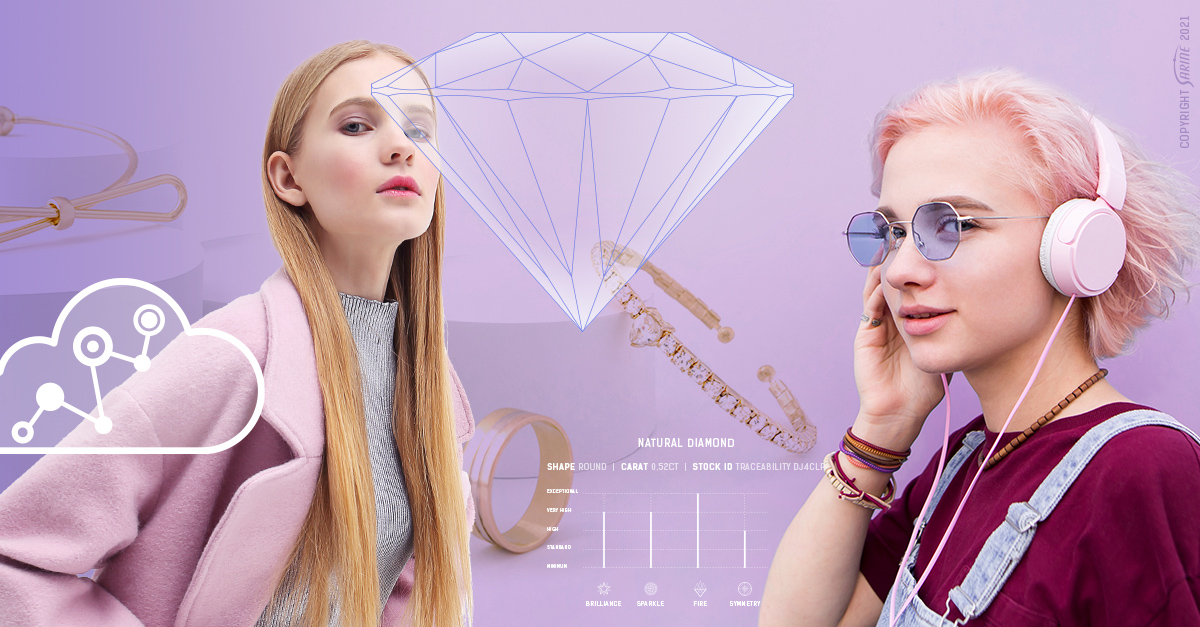At the start of a fresh decade, the Millennial generation is moving into mid-adulthood, and a new generation, Gen Z, is coming of age. As Gen Z, which makes up 74 million of the US population, grows into young adults, no industry will remain untouched by their values, attitudes and spending habits. And the same goes for the diamond industry. Let’s take a look at what’s happening and why. But first, let’s get clear on who are the Millennials versus Gen Z.
Millennials: Self-Centered, Open-Minded and Not Afraid to Spend
Although the definitions are not set in stone, Millennials are broadly regarded as the generation born between 1981 and 1996, so the oldest Millennials are today in the early stages of middle age.
It is generally believed that the Millennial generation is supremely focused on self. This being a result of the rise of individualism as a societal value during the period when Millennials were coming of age. It’s also why Millennials are sometimes also referred to as “Generation Me”. On the other hand, Millennials are attributed as being more open-minded than previous generations, more dedicated to equality and individual rights. As the first generation to be raised in a digital world, Millennials are most likely to shop online, making 54% of their purchases over the internet, even more so than the younger Gen Z.
Now that Millennials are entering middle age, their spending power has increased. In fact, Millennials account for $600 billion in spending in the US each year. This figure is expected to rise as the generation becomes even more financially stable.
Gen Z: Ethical, Realistic, Optimistic - and That Goes for Shopping Too
Gen Z is defined as anyone born from 1997 until today, which means the oldest Gen Zers are around 22-23 years old, right at the cusp of adulthood.
Some of the characteristics of Gen Zers appear to be a sort of backlash against the famous self-centeredness and lack of drive of Millennials. While Millennials were born into a time of global plenty, Gen Z spent their early years in an era of deep recession. They are therefore typically financially savvy, entrepreneurial, and outward-looking, with a strong focus on community, dialogue, and ethics (After all, in the first decade of the 2000s, they couldn’t afford to be otherwise). Gen Z is taking the conversation to a place of authenticity, giving and idealism - this might be the reason why 88% of Gen Zers feel optimistic about the future.
Given that Gen Z is still mostly in their youth, as a group, they have less spending power, with $143 billion in buying ability a year. This is expected to rise as more Gen Zers enter the workforce and become independent earners.
The Times They Are a-Changin’ - So What Does This Mean for Jewelry and Diamond Retailers?
Like in every retail segment, the impact of Millennial and Gen Z traits in the diamond and jewelry industry can be felt along the entire sales process - from sourcing, materials, and design, to manufacturing, branding, marketing, and the in-store and online shopping experience.
Here are four ways that generational traits affect diamond and jewelry sales among Millennials and Gen Zers, and how retailers can keep up:
1. Not just products, but experiences
In stark contrast to Baby Boomers and Gen X, Millennials don’t want to buy ‘things’; they want to invest in self-enriching experiences. This is reflected in the Millennial generation’s love of travel - 82% of Millennials traveled in 2018 compared to 75% for other generations. Plus 97% of Millennials who travel shared their experience on social media. Jewelry retailers too can and should offer Millennials an experiential purchase with the help of retail technologies, such as 3D dynamic jewelry imaging and interactive digital diamond reports that immerse the Millennial customer in a holistic experience of the jewelry piece.
2. Values & consciousness
Particularly for Gen Z, ethical sourcing, eco-friendliness, and social justice are vital concepts that underscore their life’s philosophy - and these have a direct influence on spending habits too. Gen Z are concerned with their footprint on the planet and their contribution to community. And they want to buy from companies who feel the same. In fact, 60% of Gen Zers say they support brands that take a stand on issues they believe in. This doesn’t mean just supporting charities and sponsoring events. It seeps into every aspect of the retail experience. For example, the Sarine Diamond Journey™ report provides full, verifiable traceability of a diamond’s origins, from the mine to the jewelry store, so Gen Zers can be assured of the ethical source of the diamond. With solutions like this, jewelry retailers can demonstrate and share common values with young ethical buyers.
3. Love & commitment
In every generation, marriage takes on a different symbolism than the one before. However, the turn of the century perhaps saw the greatest generational change in love relationships than ever before. According to the De Beers Diamond Insight Report 2019, Millennials and Gen Z have the highest rates of cohabitation, which means more and more couples are living together without the traditional bond of marriage. This has given rise to a demand for different types of “love” jewelry. Not just a large diamond in an engagement setting, but rather many different styles and types of jewelry that commemorate a lifetime of love, the unique individuality of the couple and their self expression. Changing views of commitment and the symbols surrounding it are spurring retailers to think out of the box and provide more unique and even customized jewelry options at a range of price points.
4. More than monetary value
The combination of changing perceptions of marriage, dedication to living an ethical life bound by values, and shifting priorities in spending has made the adage of an “engagement ring costs one month’s salary” obsolete. For Millennials and Gen Z, the value of a purchase lies in its meaning and authenticity to self, not in the dollar value. Younger individuals are not buying diamonds because they are expensive and a luxury item, particularly those financially savvy Gen Zers and experience-oriented Millennials. This means that retailers must look to provide different, unique and compelling diamond jewelry designs at various price points to meet the budgets of young buyers, whether it be combinations of smaller diamonds, diamonds set in other metals besides traditional gold, rough diamonds or many others.
Despite protestations that “Millennials aren’t buying diamonds” or “Gen Z prefer lab-grown to natural”, the fact is the new generations constitute a massive share of the overall spend of jewelry and diamonds, in the US and throughout Asia and the world. Although retailers must keep up with the changing values and trends of the times, such as social media, digital in-store experiences, and ethical sourcing and traceability, the potential to tap into these markets is not up and coming - it is already here.





-1.jpg?width=310&name=blog_image%20(003)-1.jpg)





